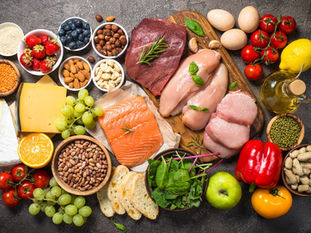

Why Controlling Glucose Spikes is Crucial for weight loss?
Aug 31, 2024
3 min read
0
29
0
Maintaining healthy blood sugar levels plays a pivotal role in weight management
and cardiovascular health. Whether you have diabetes or not, understanding the
connection between blood sugar and weight loss is essential. Here is why:
Insulin and Glucagon: These hormones work together to regulate blood sugar.
Insulin promotes energy storage, while glucagon mobilises energy. When
blood sugar is well-regulated your body is more likely to use stored fat for
energy, supporting weight loss goals.
Low-Glycemic Diet: Minimising spikes in blood sugar and insulin levels is
crucial. A low-Glycemic diet achieves this by emphasising foods that have a
gradual impact on the blood sugar. It is particularly beneficial for those with
type 2 diabetes or at risk of developing it.
Metabolic health: Good metabolic health increases insulin sensitivity, making
is easier for cells to absorb glucose from bloodstream. This reduces the
likelihood of excess glucose being as fat. Personalised care plan and lifestyle changes play a vital role in managing blood
sugar, promoting weight loss, and supporting cardiovascular health.
Here are some effective strategies for managing blood sugar spikes:
Balanced Diet: meaning including a variety of foods in daily food intake.
Consume a wide range of foods, including fruits, vegetables and starchy
options like pasta, potatoes, and rice -opting for Low-Glycaemic options that
are going to be discussed is preferred. Limit sugar, Saturated fats and salt to
minimum. Avoid skipping meals, especially if you take medications that can
cause low blood sugar (hypos).
Consuming carbohydrates with healthy fats or protein for example eating a
piece of bread with avocado and boiled egg or eating a bowl of salad with any
type of vinegar before a high carbohydrate meal is a way to bring the glucose
spike under control.
Consult a dietitian, if changing your diet feels challenging, seek support from a
dietitian.
Physical activity: Aim for 150 minutes of moderate activities per week. You
can start with 60-90 minutes and gradually build it up. Activities as simple as
brisk walking, climbing stairs, or vigorous housework can help lower blood
sugar.
Weight management: losing eight if you are overweight, improve insulin
sensitivity and reduces blood sugar levels. Some evidence suggests that
short-term low-calorie diets ( 800-1200 calories a day) can lead to significant
weight loss and even remission of type 2 diabetes. However, consult a
healthcare professional before attempting such a diet.

A low glycaemic diet focuses on minimising blood sugar spikes after eating. It ranks
foods based on their glycaemic index (GI), which measures their impact on blood
sugar levels. Here are what you need to know regarding low GI food:
Glycemic Index (GI): This system classifies carb-containing foods by their effect on blood sugar. It ranks food from low (55 or fewer) to high (70 or more) based on how quickly they raise blood sugar levels. Low-GI foods are preferred because they cause slower rise in blood sugar.
What to eat:
High protein food such as lean meat, Fish and Tofu
Dairy products: Milk, Natural yoghurt, and unsweetened soy milk (opt for lower fat options)
Vegetables: Broccoli, green peas, leafy greens
Low sugar fruits: apples, oranges, blueberries
Whole grains: opt for coarse oatmeal, meaning the oat that have been chopped into tow or three pinheads-size pieces not completely grind.
Legume and beans: Chickpeas, Lentils, Kidney beans.
What to avoid: High-GI foods that cause rapid blood sugar spikes, processed
sugars, refined grains, and sugary snacks.
Remember, a low glycemic diet supports overall health by promoting stable blood
sugar levels and aiding weight management.
Book our consultation on Contact us page or Whatsapp and kickstart your journey to a better health



